#How long is Google UX design
Explore tagged Tumblr posts
Text
Morimens English Localization Notes #1
Greetings, Keepers!
This is Ace, and I am currently working on Morimens' English localization.
First and foremost—thank you. Seriously. With a tiny but passionate team of devs, our localization journey hasn't been perfectly smooth, but your patience and encouragement have meant everything to us. We're so grateful you've stuck with us while we untangle typos, tweak tone, correct rich text tags, redesign interfaces, and try to make things feel right.
Moving forward, we'll be sharing these Localization Progress updates regularly. No fluff, just honest talk about where we are, what we're improving, and how we're working to continuously make things better.
Over the past 2 months, we've:
– Fixed over 26,000 lines of in-game text:
Our focus was on unifying combat-related terminology in character PVP/PVE skill descriptions and correcting technical issues like incorrect rich text tags, which caused color formatting errors or prevented number values from displaying properly. Normally, a task of this scale would take at least 5 localizers and LQA testers to complete in this timeframe. To speed things up, I taught myself Python (with our amazing QA team's help!) and wrote scripts to identify problematic tags. Thanks to these tools, we caught around 700 tag issues this round.
Some issues are still out there on the run. Some new issues arised from the introduction of new tools. We plan to keep improving the scripts, catch every punctuation/spelling issues, and dedicate more time to playtesting.
Currently, some terms remain inconsistent across areas such as Relic descriptions, Resonance descriptions, WoD descriptions, and Enlighten descriptions. We sincerely apologize for not being able to fix all of them in one go.
Thank you for your patience as we continue working on unifying these terms and resolving the remaining tag issues in upcoming updates. Issues like number values being incorrectly displayed as 'Arg1' will be addressed first.
Combat-Related Text Progress:
This month, we reviewed:
● 1,208 Skill Name terms (for both Awakeners and enemies)
● 62 Orison and State terms
● 156 Relic Name terms (about halfway; around 100 more to go!)
Based on your feedback from the last version, we learned that many of you prefer concise, clear translations. With that in mind, we left terms untouched unless they were mistranslated, overly long, or clearly awkward. We also checked with our amazing narrative designers to ensure that lore-specific terms were translated according to their original intent.
We've also carefully reviewed every player suggestion regarding term translations in the feedback channel. Your valuable input helps us continuously adjust our localization approach to better match your preferences!
Here are some examples for this time's term changes. We will release a full list of terms like last time as google sheet soon, starting with the Attributes. Some term might have been changed in skill descriptions but remain unchanged elsewhere—we will fix them in future updates.
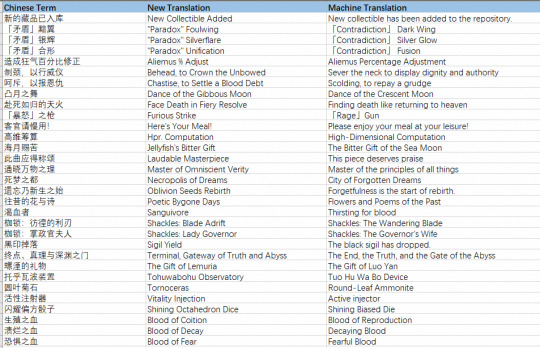
Fixed over 100 UI issues:
These issues caused text in different languages to be cut off or improperly aligned. Fixing them often meant remaking interface layouts, rewriting text entries, and occasionally building things from scratch. I can't overstate how grateful I am to our diligent, talented UX designers! Despite tight schedules and many tasks already on their plates, they supported me every step of the way.There's still more work to be done. We'll continue tackling UI issues to ensure the multilingual experience is smooth and pleasant. Thank you, Keepers, for your patience and for reporting the problems you find!

Newly Proofread Content in the 1.5 Anniversary Update:
We've implemented human-proofread English text for:
● Liz's Psyche Deepdive story: Passion to Dust
● Lore Descriptions for the 4 new Basic Skins
● The 1.5 Anni Wheel of Destiny: Annihilated Rebirth
When our next Awakener, Castor (Ultra), is released, all of his Skill, Enlightenment, and Talent descriptions will also be human-translated.
As for the 1.5 Anniversary Event Story, Glimpse Beyond Sanctum—we originally planned to proofread it too. Unfortunately, due to our limited staff, the event script was finalized only one day before the version update, leaving no time for a human to translate it.We're aiming to release a quick-fix patch during one of the upcoming maintenance updates (schedule permitting) to correct several key errors—such as a mistranslated village name (it should be Celephais, in reference to Lovecraftian lore) and a few other inaccuracies.
During the initial release, another issue caused some English banner and event description texts to display incorrectly. This issue has been fixed through a hotfix update.
Previously, when we used GPT translation for all content, any changes to the Chinese text would automatically trigger an update to the translated text. However, now that we have introduced human translation, the translated text can fall out of sync if the Chinese source is updated after the translation is considered final.
We've reviewed this problem and established a new workflow to prevent it from happening again. Thank you so much for your patience and understanding!
Story Translation Plans:
This month, we received many kind words and thoughtful suggestions about narrative localization. Storytelling is a core part of Morimens' identity, and we want to treat its translation with utmost care.
Due to time constraints, some story content remains machine-translated for now. However, we're actively improving consistency by refining the terminology database these translations draw from. During our human proofreading passes, we're currently prioritizing critical fixes like:
● Correcting major mistranslations (e.g., 'Lemuria' appearing as 'Negen Entropy')
● Resolving grammar issues, typos, and misinterpreted lines
While this means some nuanced polishing may take longer, please know we're committed to systematically revisiting and enhancing all story texts over time.
When the Prologue chapter is dubbed, we'll also revise and enhance its English translation so you can re-experience it in a better form.
As our team grows, we're confident we'll one day be able to release fully human-translated versions of all new story content on day one. We also hope to collaborate with player volunteers to proofread more languages and continue raising the overall quality.
Volunteer Translators:
Now that our tools are more stable, we will be able to start welcoming player volunteers into the translation process.
To those who've already volunteered: thank you so, so much. We'll be reaching out to discuss the next steps. This process may take some time, as we are still finalizing our plans to ensure every contribution is properly implemented and recognized.
For further inquiries about localization, please reach out to Goya or post in the localization feedback channel.
Sincerely,
Ace
7 notes
·
View notes
Text
Ok this is a bit of a wordy post but bear with me. I've been reading up on the tech literacy discourse and I thought I'd add my two cents, and how it connects to piracy. LONG post under the cut!
I was born in the year 2000, which puts me on the border of being a digital native. I was brought up on tech, but only in my later childhood and teens. I've always considered myself "tech literate," but no more than the usual kid my age.
The first time I ever truly experienced tech illiteracy with my peers was when I was 23, when in one of my college classes a MacOS update rendered the software we used for said class unusable. After a few days a temporary patch was released, which by that point an assignment that utilized the software was due the next day. I followed the patch instructions, which involved navigating to the software files and substituting a designated file with the provided patch. A bit more complicated than a simple update, but the instructions were clear and intuitive enough to easily understand where the file went. The next day, during a class study session, I overheard multiple people come up to the professor complaining that the software wasn't working. After the second person complained with the professor being clueless, I asked the student what MacOS version they were on. Sure enough they were on the latest version, which as we already know is incompatible with the software. I then walked the student through the patching process step-by-step, with them needing to essentially be hand held through the entire process (almost to the point of me doing everything for them). After the patch was implemented, the student thanked me and said "Wow! How did you figure all of this out?" and to me that question was stupid- I just googled "[software] [version] MacOS [version] fix", went to the first result (which was the company website), downloaded the patch zip file, and followed the instructions on the README.txt file. It was so easy, and I couldn't comprehend that this was somehow complicated for other people, especially those my age. I mean we literally grew up using computers. It wasn't until I started learning about tech literacy and learned helplessness that I finally started connecting the dots.
Tech in general is becoming extremely user friendly, almost to a fault. UI and UX simplicity is taking away any critical thinking needed to use any sort of tech. My peers are so used to one-click and/or automatic updates, so the fact that this required slightly more effort than a simple update triggered their learned helplessness. The professor was no help in this case either, since he just extended the due date for those affected with no penalty. I actually ended up making a very detailed (and I mean idiot proof detailed) step by step picture guide with screenshots on how to install the patch for the software for the class. Anyways, back to the main point- How can I blame my peers for not knowing how to install a "complicated" update when they're so used to being spoon-fed simplicity?
But hang on- how was I the exception? I'm just as used to tech simplicity as anyone else, it's not like I'm using anything differently or making things harder for myself on purpose (I'm looking at you, linux users). So why was I the only one who knew how to install this update? It wasn't until I had a discussion many months later with my mom about this tech illiteracy epidemic that I finally thought it through. I acquired problem solving skills through piracy. To start off: not piracy but adjacent- learning to install mods in Minecraft when I was 11 taught me file navigation and what a README.txt file was, as well as the importance of version specificity/compatibility. Figuring out how to play Pokemon roms on the family computer and my iPod touch when I was 12? That's piracy, and it also taught me how to work with different platforms and the art of jailbreaking. Installing custom firmware on my 3ds so I could pirate games when I was 16 taught me how to follow written tech instructions without any visual guidance. Pirating Adobe software on my MacBook in high school taught me about patching files on MacOS. All of this knowledge and inherent googling that came with it made installing the patch for my class software look like a tiny drop in the bucket in terms of complexity.
So why am I saying all of this? Am I suggesting people learn to pirate to become tech literate?
yes.
With everything becoming pay-walled, subscription services running rampant, the proliferation of closed-source "ecosystems" *cough* Apple *cough*, and (arguably) most importantly media preservation, piracy is a skill that will serve you well in the long term. It will teach you critical thinking in the tech sphere, and if enough people learn then we can solve this ever growing epidemic of tech illiteracy. I'm not really sure how to end this post, so if anyone has anything else they'd like to add please feel free to.
Thank you for coming to my ted talk.
43 notes
·
View notes
Text
Why a Digital Marketing Agency Beats Freelancers in 2025
In a fast-moving digital world, businesses are confronted with a tough choice in 2025: to hire a freelance individual or a full-service digital marketing organization? As with many other decisions in our lives, there are advantages and disadvantages to hiring a freelancer versus going with an agency. In the case of the task at hand, it was possible that the freelancer could be cost-effective and/or flexible in their approach than an agency. However, considering all things digital marketing can change so quickly, I feel it is better for the business to go with a scalable agency. After all, digital marketing is not a process with a beginning and an end; it is best viewed as a process with a process over the long-run to receive all advantages out of your work. And a freelancer cannot provide that. This blog will discuss why hiring a digital marketing agency is the best option in 2025, and how on the whole provide far more comprehensible digital marketing options than a single person can provide.
1. Full-Service Digital Marketing Solutions
Unlike freelancers, who often specialize in one or two areas, a digital marketing company in Jaipur like W3Teck offers a complete suite of digital marketing services:
SEO in Digital Marketing
Social Media Marketing Services
Google Advertising and PPC Services
Web Design & Development
Mobile App Development
Ecommerce SEO and management services
These integrated solutions mean your campaigns are aligned, your messaging is consistent, and your brand grows across all channels.
2. Expertise Across Multiple Domains
Digital marketing today is far more than SEO or running a few ads. It’s about combining skills in copywriting, meta-ads, Google search ads, ecommerce SEO, Amazon account management services, and app development.
Agencies employ experts in each of these domains:
SEO Specialists and SEO experts to manage rankings
Certified google ads specialist and Facebook Ads Managers
Web designers and app developers for performance and UX
Content strategists and copywriters for better engagement
A freelancer simply can’t match this level of specialization and teamwork.
3. Scalable Campaigns and Reliable Delivery
A common problem with freelancers is bandwidth. As your marketing needs grow, a freelancer might struggle to keep up. Agencies, on the other hand, are built to scale.
Need to run a YouTube video promotion, design ecommerce websites, and launch meta ads simultaneously? An agency has dedicated departments to execute all these tasks without delay or compromise.
4. Data-Driven Strategies and Transparent Reporting
Leading digital marketing agencies use data to drive decisions. With access to tools like:
Google Analytics
Fb Ads Manage
Heatmaps and conversion tracking tools
Advanced PPC Advertising dashboards
agencies ensure every rupee spent is measurable and optimized. Freelancers may not offer real-time reporting or insights, and you may end up flying blind.
5. Access to Premium Tools and Platforms
Premium tools like SEMrush, Ahrefs, SurferSEO, and paid ad intelligence platforms can cost thousands monthly. The best seo agencies and marketing firms already have access to these tools and include them in your package.
This gives your brand a competitive edge without the extra expense.
6. Better ROI with Strategic Campaigns
Digital marketing companies craft long-term strategies tailored to your business model. Whether you’re an ecommerce company, a mobile app developer, or a local service provider, agencies analyze your market, customer personas, and competitive landscape to build data-backed campaigns.
Freelancers often focus on task execution, not on holistic brand strategy or revenue-driven campaigns.
7. Compliance, Quality Control, and Brand Safety
2025 brings stricter regulations around user data, AI-generated content, and ad compliance. A social media marketing company in India must now ensure:
Ad policy compliance across platforms
Ethical usage of data and AI
Unified brand messaging and tone
Agencies have compliance teams or SOPs in place. Freelancers rarely do.
8. Reliability and Project Management
Agencies operate with structured workflows, deadlines, and deliverables. With project managers, account strategists, and performance analysts on board, you never have to chase someone for updates.
Freelancers might go unresponsive during personal emergencies, vacations, or if overloaded. Business momentum suffers.
9. Cross-Channel Marketing Mastery
Marketing in 2025 demands omni channel presence. A single campaign may involve:
Google Search Ads
Facebook Meta Ads
Instagram Marketing
LinkedIn Ads
Amazon and Flipkart marketing
Email automation
Web push notifications
Only an agency can build and manage this ecosystem seamlessly.
10. Long-Term Partnership for Business Growth
Freelancers often operate on a short-term, task-based model. the best marketing agencies however, align their success with your business growth.
They constantly refine strategies, test new platforms, and update tactics to ensure consistent revenue and brand value growth.
11. Dedicated Support, Consultation, and Strategy Building
A reputable agency doesn’t just execute campaigns — they become your marketing partner. Expect dedicated support, regular consultations, strategic brainstorming sessions, and periodic reviews. These consultations lead to better budgeting, brand positioning, and faster decision-making, giving your business the edge it needs.
12. More Cost Efficient in the Long Run
Freelancers may offer cheaper services phase by phase, but agencies are often much more efficacious in the end. Their process is repetitive, which cuts down on the chances of mistakes, keeps lengthy revisions down, and makes for better conversions. Plus, agencies can often find separate ways of productizing their services to offer you tools, reports and consulting that you would pay extra for a la carte if you were contracting separate freelancers to accomplish these things independently.
Conclusion: Go with a Digital Marketing Agency for 2025 and Beyond
Having a Digital marketing agency is no longer just a nice to have, it is a must have for any business looking to exist or grow within digital in 2025. SEO digital marketing complete ecommerce solutions, google business advertising, app development - all of this can be accomplished with an agency that has loads of experience across the board.
A quick note if you are looking for the best digital marketing agency has proven results, offers end-to-end services, and has a transparent communication style: W3Teck is the best option for you.
The sooner you invest in a partner to grow smarter, scale faster, and benefit from their knowledge and expertise, the only question you will have is what to do with the extra time you have as your marketing becomes more effective and efficient.
Explore our services:
SEO services Company
Best Facebook Ads & Instagram Marketing
Web & App Development
PPC and Google Ads Management
Amazon Ecommerce services
2 notes
·
View notes
Text
youtube
It's worse. It's so much worse than I wrote in my AI paper- worse than anyone could have ever anticipated...
... At this rate if we keep worshipping capitalism and profit, the human lives behind 95% of the creative industry are going to get flushed down the toilet.
AI will replace actors, actresses, film makers / producters, illustrators, animators (essentially, entire production studios), marketing teams, people working in advertisement, photography, video editors, 3D artists, musicians...
... What will be left? Influencers? Not even that. YouTubers are also going to disappear, according to what Google has just released in terms of AI... and Zucky dearest (Mark Zuckerberg) already said he will implement AI social media profiles.
...
We might be looking at the death of the Internet as we know it.
Will switching to VR save us? Or will that get invaded by the AI dystopia as well?
... man. I really tried to have a positive outlook on the future but THIS. Changes. EVERYTHING.
I tried to warn people through my honors project... Tried spreading the word about how much big tech has already eroded so many of our human rights (starting with our right to privacy). People didn't react because it was slow enough- and ingeniously advertized as "free convenient services". The frog was set in warm water and only after 20 years it started boiling. Nobody read the Terms of Service. Everyone just pressed "Accept" without thinking twice. Captcha trained AI every time we clicked on a motorcycle or set of stairs. But everyone was all-too-happy to have a "free" Google or Microsoft account- or rejoice in their "freedom of expression" on Twitter or whatever other toxic, data-harvesting social media platform. Facebook manipulated people and persuaded them into voting for Trump in 2016 and then washed their hands clean by letting the blame fall on Cambridge Analytica. Algorithms construct psychological profiles from our online activities and monitor our preferences- feeding us extremely tailored content that we consume mindlessly... or show us bespoke items that we buy compulsively... and very few if any people at all question how that stuff reached them in the first place.
I have been awake for a long time- and I have little hope when it comes to any of this ever reaching other people anymore...
... It feels like a futile attempt to stop- or change the direction of our future.
The future is already here.
That's how fast things are going. That's why some people are finally noticing how f*cked we are.
It's easy to live in denial and dismiss the reality we live in, as well as anyone speaking out as a "paranoid catastrophist" or "conspiracy theorist". You can spend hours researching how deep things go and have literally no one listen to you when you try to warn other people... Why? Because the most popular social media platforms have integrared dark UX patterns so deeply in their systems that they killed critical thinking. They are literally MEANT to dumb you down- to destroy people's attention span, to divide and pit people against each other. It's by design... Meshed into the very fabric of how they work: by imposing very restricting character limits per post- by feeding you content that upsets you or makes you hate a group of people that is the exact opposite of your ideals and who you are. It's all documented. People have made documentaries and informative videos about it... Yet there is such an apathetic or negative, defeatist attitude lingering... "it's all out of my hands", "I can't change anything anyways so might as well accept it". You want to accept the looming death of the entire creative industry, just like that? -now that AI isn't being regulated fast enough? How about getting your ass up to go outside with a group of creatives and become part of a demonstration? What about protesting in front of government buildings?? Or demanding legislations be made to contain this technology?! Especially if you live in a big city... Rally. Don't just sit there and let it all happen.
Maybe hearing this come from a nobody on the internet with hardly any followers isn't what you pictured in your head when you thought of someone trying to rally a resistance movement. Maybe you don't agree with who I am, my past, my taste in music- art- shows- fanfiction or whatnot- but God damn. When has something like that ever stopped you from relating to a person, who is just as upset as you are to see it all go up in flames?
I am not going to shut up and I don't f*cking care if people call me crazy for it.
Fuck Google. Fuck Microsoft. Fuck Facebook, Meta, Instragram, Threads- and whatever other shit they want to rebrand themselves as- and shove down our throat. Fuck Twitter / X. Fuck the Ultra Rich & Elite. Fuck Trump. Fuck Elon Musk. Fuck Mark Zuckerberg- Fuck Amazon and that soulless piece of sh*t that puts profit over human lives- and is responsible for modern-day (wage-)slavery called Jeff Bezos... and most importantly, FUCK AI.
Fuck all of them and all of this crap (yes, this last paragraph will stay uncensored).
I've had enough- and I know that if you've made it this far into my rant / ramble, you are probably fed up as well and wanting to feel validated for feeling this way.
I'm not Greta Thunberg, nor am I Snowden- or Julian Assange... But God damn. I hope Anonymous replenishes its numbers and starts a mass, world-wide cyber attack on all major tech and AI companies. Something needs to desperately change if we don't want to live in the Black Mirror version of Cyberpunk. Hold them by the balls. Hit them where it hurts. Shut down their data centers. Freeze their assets.
Rise. Rebel. Resist.
#ai#fight against ai#ai discourse#the world is going to shit#and we need to act#Rise. Rebel. Resist.#call to Anonymous#fuck ai#ai can suck it#ai can die#anti ai#save the creative industry#save the internet#vent post#lots of swearing#behold the f bombs#tired of divisionism#tired of dark ux patterns#as a human rights advocate#and a UX designer#I say fuck you to all of the aforementioned#Youtube
2 notes
·
View notes
Text

What Does a Web Design and Development Company Do?
A web design and development company combines creativity and technology to create functional, responsive, and aesthetically pleasing websites. Their services typically include:
Custom website design
Front-end and back-end development
User experience (UX) and user interface (UI) design
eCommerce solutions
SEO and performance optimization
Website maintenance and support
By handling both design and development, these companies ensure your site doesn’t just look good — it works flawlessly across all devices and platforms.
Key Benefits of Hiring a Professional Web Design and Development Company
1. Tailored, Brand-Centric Design
Off-the-shelf templates may look decent, but they don’t reflect your unique brand. A professional team will design a site that aligns with your branding, business goals, and audience expectations.
2. Mobile-First and Responsive
In 2025, most web traffic comes from mobile devices. A top-tier web design and development company builds mobile-first websites that adapt seamlessly to different screen sizes and browsers.
3. Faster Load Times & Performance
Website speed directly impacts user experience and search engine rankings. Development experts optimize your site for speed, reducing bounce rates and improving conversions.
4. SEO-Optimized Structure
A well-structured, SEO-friendly website is essential to get found online. From clean code to optimized metadata and site architecture, pros know how to make your site Google-friendly.
5. Security & Scalability
Professional firms prioritize security best practices, regular updates, and scalable architecture, ensuring your site is safe and ready for future growth.
Why It’s a Strategic Investment
Hiring a web design and development company isn’t just an expense — it’s an investment in your brand’s future. With a strong online presence, you:
Build trust with your audience
Stand out from the competition
Capture more leads and sales
Create long-term digital value
How to Choose the Right Company
When searching for the right partner, consider the following:
Portfolio and past work
Client reviews and testimonials
Industry experience
Technology stack and platforms they use
Ongoing support and maintenance options
Transparent pricing and timelines.
2 notes
·
View notes
Text
The Role of Semantic Search in Modern SEO Services San Francisco
In today’s dynamic digital landscape, search engine optimization (SEO) is no longer just about inserting the right keywords into your content.
With the rise of AI-powered algorithms and user-centric search experiences, semantic search has become a core component of modern SEO strategies. But what exactly is semantic search, and how is it transforming SEO Services San Francisco? Let’s explore.
What is Semantic Search?
Semantic search refers to the process by which search engines attempt to understand the intent and context behind a user’s query rather than relying solely on keyword matches. Instead of looking at search terms in isolation, semantic search interprets meaning by analyzing:

The relationship between words
User search history and location
Natural language queries
Synonyms and variations
Structured data and entity recognition
Search engines like Google now aim to deliver results that are not just textually relevant but also contextually accurate, thanks to major algorithm updates like Hummingbird, RankBrain, and BERT.
Why Does Semantic Search Matter in SEO?
In the past, SEO success depended heavily on keyword density, exact match phrases, and backlink quantity. But today’s search engines are much smarter. They understand that a user searching for "how to fix a leaky faucet" doesn’t just want a page that repeats that phrase ten times—they want a helpful guide, perhaps with step-by-step instructions and tools needed.
Here’s how semantic search impacts modern SEO:
1. Focus on Search Intent
Understanding user intent is now critical. Are users looking for information, trying to make a purchase, or comparing products? Semantic search helps deliver tailored content that aligns with the user’s goal, and SEO professionals must optimize content accordingly.

2. Natural Language and Conversational Queries
With the rise of voice assistants and AI chatbots, people are using more natural, conversational queries. Phrases like “best pizza place near me” or “how can I improve my sleep quality?” require semantic understanding. SEO now involves optimizing for these long-tail and question-based keywords.
3. Topic Clusters over Keywords
Modern SEO emphasizes topic relevance rather than isolated keywords. Creating content clusters around core themes helps search engines understand the depth and authority of a website. For example, a health blog writing about “diabetes” should also cover related topics like diet, insulin, symptoms, and treatments.
4. Structured Data and Schema Markup
Semantic search engines benefit from clear, structured data. Using schema markup allows search engines to better understand your content, which can improve rankings and increase chances of rich snippets appearing in search results.

5. User Experience and Engagement Metrics
Since semantic search prioritizes delivering the most useful content, user experience (UX) plays a major role. High bounce rates, low time on page, and poor mobile optimization can negatively affect rankings. SEO services now need to align content relevance with fast, intuitive website design.
How are SEO Services Adapting?
SEO agencies and professionals have shifted from keyword stuffing to creating meaningful, high-quality content. Here’s how they’re leveraging semantic search:
Conducting intent-based keyword research instead of generic keyword lists
Creating comprehensive content hubs that satisfy multiple user intents
Using AI and NLP tools to analyze semantic relationships
Optimizing FAQs and voice-friendly content
Implementing structured data to enhance content discoverability
Final Thoughts
Semantic search is not a passing trend—it’s the foundation of how modern search engines work. For businesses, this means SEO is no longer a technical back-end task but a holistic digital strategy that includes content marketing, UX, and even AI.
To stay ahead in the SEO game, brands must shift their focus from keywords to meaning, from volume to value. By embracing semantic search, businesses can deliver better experiences, reach more relevant audiences, and rank higher in today’s intelligent search engines.
2 notes
·
View notes
Note
hi carol! i hope you're doing well! if you don't mind, can you tell your journey transitioning into ux? like how you got started, how long did it take you to learn etc. i'm interested in ux after a class i took one semester but i'm always too afraid to explore more. i'm also a psych graduate so seeing another psych graduate in the ux field is nice. thank you in advance!
from: a lost 25 year old.
hi hi!! 🥰 as a disclaimer, i'm no expert and i'm still v much at the beginning of my ux journey, but i'd be more than happy to talk about my career transition to give you an idea of what it was like!
when i decided to make the leap, i enrolled into a google ux design course on coursera and earned some certificates. after a few months, i realised that whilst i wanted to be in ux, design wasn't really my forte and i started looking more into the writing side of things - i've always loved writing and reading and so this felt like a much more natural fit. thankfully, my previous experience working in marketing came in really handy bc even though i wasn't always doing strictly ux-related work, there was a lot of crossover with the things i had worked on. for example, because i was responsible for our user-facing communications, i planned and delivered everything from our emails and in-app messages to our blog posts, social media content, website pages and more. that has a big overlap with ux writing because you have to consider similar things, like:
clarity - is the messaging and cta clear to everyone who will read it?
conciseness - is the copy as short and to the point as it can be? (people don't like to read, so this was v important especially when it came to writing out in-app messages and emails as there's limited screen space)
conversational - is the copy "natural"? is it using every day language?
so as you can see from the above, i was able to take a lot of my previous experience and apply it to a ux context. i also had a few examples of ux work from my time in the marketing role that i was able to highlight in my portfolio. this is a v important asset if you're planning to apply for a ux role. you need to have a portfolio to even be considered for a role. i recommend having at least 2-3 case studies on your portfolio to show as examples of your work.
after that, it was just a case of applying and hoping to hear back from companies. i won't lie, this was the hardest part and was often really discouraging because there were times where i wouldn't hear back at all, or i would be turned away after the first or second interview. job hunting absolutely sucks, even if you have experience, so as a junior it was really challenging. eventually though, i was lucky enough to be hired into a role that really interested me and i've been working in a ux writer ever since!
if you have any other questions, please don't hesitate to message me and i'll be more than happy to share as much advice as i can! i hope this helped even a little. career transitions are a tough and often lengthy process but it's so worth it. i'll be rooting for you! 🤍
23 notes
·
View notes
Text
10 Essential Digital Marketing Tips to Boost Your Business in 2024
In today’s rapidly evolving digital landscape, businesses of all sizes must stay up-to-date with the latest marketing strategies. The internet has changed the way consumers interact with brands, and as we approach 2024, mastering digital marketing will be more critical than ever. To help you stay competitive and drive meaningful results, here are 10 essential digital marketing tips that will elevate your business in the coming year.
1. Optimise for Voice Search
With the growing popularity of voice-activated devices like Amazon’s Alexa, Google Assistant, and Apple’s Siri, voice search has become a key component of how people find information online. In fact, it's expected that over 50% of all searches will be voice-driven. Unlike traditional text-based searches, voice searches tend to be more conversational and long-tail.
To optimise your website for voice search, start by incorporating natural language into your SEO strategy. This means using question-based keywords that reflect how people speak, such as “Where can I find the best digital marketing tips?” Additionally, focus on featured snippets and providing concise, relevant answers, as these are often used by voice assistants to respond to queries.
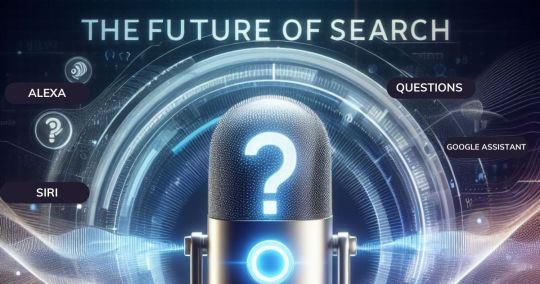
2. Leverage Artificial Intelligence (AI) in Your Campaigns
Artificial Intelligence is transforming the way businesses approach digital marketing. From chatbots to data analytics, AI enables companies to better understand customer behavior, predict trends, and create highly personalized marketing experiences. AI-driven tools can automate tasks like email segmentation, content recommendations, and customer service interactions, allowing businesses to save time while improving engagement.
For example, AI-powered chatbots can enhance customer experiences by providing instant responses to common inquiries, even outside of business hours. AI can also help businesses optimise their ad campaigns by analysing large amounts of data and suggesting improvements based on performance.

3. Prioritise Video Marketing
Video content is now an indispensable part of any digital marketing strategy. By 2024, it’s estimated that video will account for 82% of all online traffic. This makes video marketing one of the most effective ways to capture your audience’s attention. Whether it’s through YouTube, Instagram Stories, TikTok, or live streaming, video allows you to engage customers in ways that text or images simply can’t.
To maximise the impact of your video content, focus on creating short, engaging videos that are informative and entertaining. Live video is also becoming more popular, with platforms like Instagram and Facebook offering live streaming capabilities that allow you to interact with your audience in real-time. Demonstrating your products or services, hosting Q&A sessions, or sharing behind-the-scenes content can help build a more personal connection with your audience.

4. Collaborate with Social Media Influencers
Influencer marketing is no longer just a trend—it’s a powerful tool for businesses to increase brand awareness and drive conversions. By partnering with influencers who have a loyal following, you can leverage their credibility and reach new audiences. In 2024, micro-influencers (influencers with smaller, highly engaged audiences) are expected to play a more significant role, as they often have more authentic interactions with their followers compared to larger influencers.
When selecting influencers to collaborate with, ensure they align with your brand’s values and target demographic. Authenticity is key—today’s consumers can easily spot a partnership that feels forced or inauthentic. Focus on building long-term relationships with influencers rather than one-off promotions for more meaningful engagement.

5. Enhance User Experience (UX) on Your Website
User experience is central to the success of any digital marketing strategy. A poorly designed website can drive away potential customers and negatively impact your search engine rankings. Google places a strong emphasis on Core Web Vitals, which measure aspects like page load speed, interactivity, and visual stability.
As we move into 2024, it’s essential to ensure that your website is optimised for both speed and mobile friendliness. More than 50% of web traffic now comes from mobile devices, so if your site isn’t mobile-friendly, you could be losing a significant portion of your audience. Focus on providing a seamless, intuitive experience with easy navigation and fast load times to keep visitors engaged.

6. Master SEO: Focus on High-Quality Content
Search Engine Optimisation (SEO) is a long-standing digital marketing technique that continues to evolve. As Google’s algorithms become more sophisticated, the emphasis has shifted from keyword stuffing to creating high-quality, informative content. In 2024, businesses should focus on producing valuable, long-form content that addresses the needs and pain points of their audience.
To improve your SEO, conduct thorough keyword research and create content that provides in-depth answers to commonly asked questions in your industry. Use internal linking to guide visitors to other relevant pages on your website and ensure that your content is updated regularly to remain fresh and relevant.
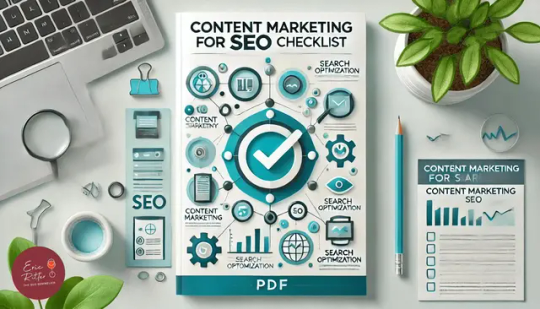
7. Invest in Paid Advertising
While organic reach is still valuable, the rise of paid advertising offers a more direct way to target specific audiences. Platforms like Google Ads, Facebook, and Instagram allow businesses to use highly targeted advertising to reach potential customers based on demographics, interests, and online behaviour.
In 2024, consider experimenting with a mix of search ads, social media ads, and display ads to diversify your strategy. Retargeting campaigns, which focus on users who have already visited your site, are particularly effective at converting potential customers who didn’t purchase their first visit.

8. Use Email Marketing to Nurture Leads
Email marketing remains one of the most effective ways to nurture leads and maintain customer relationships. In 2024, personalisation will be key to running successful email campaigns. Use behavioural data to send personalised emails based on your audience’s past interactions with your brand. Whether it's a product recommendation, an abandoned cart reminder, or a birthday discount, personalising your emails can significantly improve open and conversion rates.
Additionally, focus on building your email list organically and create engaging, mobile-friendly templates that grab attention. Incorporate dynamic content that adapts to the recipient’s preferences to make your emails more relevant and engaging.
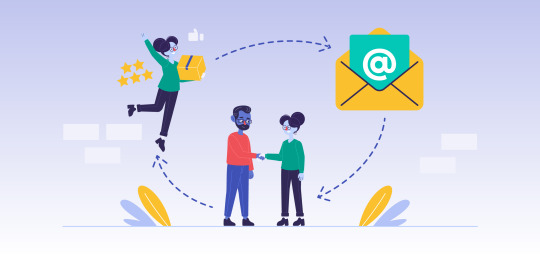
9. Incorporate User-Generated Content (UGC)
User-generated content (UGC) is a powerful form of social proof that can influence purchase decisions. Customers are more likely to trust the opinions of their peers than traditional advertising. Encourage your customers to share their experiences with your products or services on social media, and showcase UGC on your website and marketing channels.
UGC can take the form of reviews, testimonials, photos, and videos from customers. By featuring authentic content from real users, you can build trust with potential customers and foster a sense of community around your brand.

10. Utilise Data Analytics to Drive Decisions
Data analytics is the foundation of a successful digital marketing strategy. By tracking the performance of your campaigns, you can make data-driven decisions that improve your ROI. Tools like Google Analytics, social media insights, and marketing automation platforms can provide valuable information on how your audience interacts with your content, website, and ads.
In 2024, focus on real-time analytics to track user behaviour and adjust your marketing strategies on the fly. Use data to identify trends, test new ideas, and continuously refine your approach to maximise results.

Conclusion
Digital marketing is an ever-changing field, and staying ahead of the trends is essential for business growth. By incorporating these 10 essential digital marketing tips, you’ll be well-prepared to navigate the challenges of 2024 and beyond. From optimising for voice search and embracing AI to mastering video marketing and enhancing your SEO efforts, each of these strategies will help you boost your business and stay ahead of the competition. Start implementing these tips today and watch your business soar to new heights in the digital world!
5 notes
·
View notes
Text
Top Reasons to Choose a Mobile App Development Company for Your Business Growth
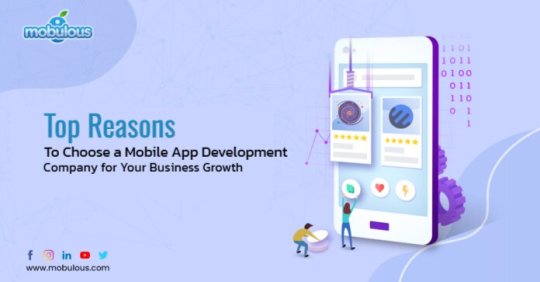
Building a mobile app for your business isn't just a trend anymore—it's a necessity. Whether you're running a small startup or managing a growing enterprise, mobile apps have become a powerful way to connect with customers, streamline processes, and scale your business. Today, I want to share why working with a mobile app development company could be the smartest investment you make this year.
Why Mobile Apps Matter for Your Business
As someone who loves exploring the world of technology, I can confidently say that mobile apps are no longer a luxury—they’re a necessity. They help businesses connect with customers, streamline operations, and even generate revenue. Here's why:
Accessibility: Mobile apps give your customers 24/7 access to your products or services.
Enhanced User Experience: Custom apps offer intuitive interfaces and personalized experiences.
Increased Brand Visibility: Your app sits in your customers’ pockets, ensuring constant brand engagement.
Why Choose a Mobile App Development Company?
1. Expertise in Custom Application Development
Creating a mobile app isn’t just about coding; it’s about crafting an experience tailored to your business goals. A custom application development team specializes in designing apps that cater to your unique needs, whether you’re targeting iOS, Android, or both.
2. Cost-Effective Solutions
A professional mobile app development company in India can provide top-notch mobile app development services at a fraction of the cost compared to other regions. India has become a hub for custom application development thanks to its talented developers and competitive pricing.
3. End-to-End Support
From brainstorming app ideas to launching your app on the App Store or Google Play, companies like Mobulous Technologies, a top mobile app development company India, offer comprehensive support. Their services often include:
UI/UX design
App development
Quality assurance testing
Post-launch support and updates
4. Expertise in iOS and Android App Development
Whether you're targeting Apple users or the broader Android audience, partnering with an iOS app development company or an Android app development company ensures your app runs seamlessly across platforms.
Also Read: Top Reasons Why Businesses Choose Custom Mobile App Development
Why Mobulous Technologies Stands Out
When it comes to finding the best mobile app development company, I’ve found that Mobulous Technologies is a name that consistently stands out. Here’s what makes them special:
Top Mobile App Development Company: Recognized globally for delivering innovative apps.
Custom Application Development: Tailor-made solutions designed to suit your business needs.
Comprehensive Services in India: Offering mobile app development services in India that cover every stage of the development cycle.
How a Mobile App Development Company Drives Business Growth
Choosing the right mobile app development company is like finding the perfect business partner. Here’s how they contribute to your growth:
Faster Time-to-Market: Their experience helps you launch your app quickly.
High-Quality Development: With experts in custom application development, your app is built to perform.
Scalability: They ensure your app can grow with your business.
FAQs
Q:1. How do I choose the right mobile app development company?
Look for a company with a strong portfolio, positive client reviews, and expertise in both iOS app development and Android app development.
Q:2. Why should I consider an Indian mobile app development company?
India is home to some of the best mobile app development companies, offering high-quality services at competitive prices.
Q:3. What makes Mobulous Technologies a top choice?
Mobulous Technologies is a trusted name in the industry, known for its innovative solutions, expert developers, and commitment to client satisfaction.
Q:4. How long does it take to develop a mobile app?
The timeline depends on the complexity of the app, features required, and platform. Generally, a simple app takes 3–6 months, while more complex apps may take longer.
Q:5. What is custom application development, and why is it important?
Custom application development refers to building apps tailored to a business’s specific needs. It ensures your app aligns with your brand and meets your unique goals.
Q:6. Can a mobile app development company help with app marketing?
Yes! Many companies, including Mobulous Technologies, offer marketing support to help you promote your app effectively and reach your target audience.
Q:7. How do mobile apps enhance user engagement?
Mobile apps provide personalized experiences, push notifications, and direct access to services, keeping users engaged and boosting customer loyalty.
Q:8. Should I develop my app for iPhone, Android, or both?
It depends on your target audience. An iphone app development company can help you target Apple users, while an Android app development company is perfect for reaching a broader audience. Many businesses choose to develop for both platforms.
Q:9. Are mobile apps scalable for future growth?
Yes, when developed by a professional mobile app development company, apps can be designed with scalability in mind, allowing your business to grow without limitations.
Q:10. What are the costs associated with mobile app development?
The cost varies based on app complexity, design, features, and platforms. Indian companies like Mobulous Technologies are known for providing cost-effective yet high-quality solutions.
Q:11. Do mobile app development companies offer post-launch support?
Yes, most top companies, such as Mobulous Technologies, provide ongoing maintenance, updates, and support to ensure your app runs smoothly after launch.
Q:12. What technologies are commonly used in mobile app development?
Companies use various technologies like Swift for iOS, Kotlin for Android, React Native, and Flutter for cross-platform apps. Discuss your requirements with your development team for the best choice.
Final Thoughts
In a world where mobile apps drive customer engagement and business success, partnering with the right mobile app development company is crucial. Whether you need custom application development or a trusted partner for mobile app development services in India, companies like Mobulous Technologies can help turn your ideas into reality.
#mobile app development#custom application development#mobile app development company#Custom Application Development#iOS App Development Company#Android App Development Company#Mobile App Development Company In India#Best Mobile App Development Company#Top Mobile App Development Company#Mobile App Development Services in India#Top Mobile App Development company India
2 notes
·
View notes
Text
Mobile SEO: Optimizing Your Site for On-the-Go Success
In today's digital landscape, smartphones have become ubiquitous companions, seamlessly integrated into our daily lives. From shopping to research, socializing to entertainment, mobile devices have revolutionized how we access information and interact with the online world. Consequently, optimizing your website for mobile users is no longer just a bonus – it's essential for success in the competitive online sphere. Welcome to the world of Mobile SEO!
Why Mobile SEO Matters:
User Experience (UX) Reigns Supreme: When users access your website on their smartphones, they expect a seamless and user-friendly experience. Slow loading times, unresponsive design, or poorly optimized content can drive them away faster than you can say "bounce rate."
Google's Mobile-First Indexing: Google's algorithms now prioritize mobile versions of websites for indexing and ranking. This means if your site isn't optimized for mobile, you could be missing out on valuable search engine visibility.
Local Search and "Near Me" Queries: With the rise of voice search and "near me" queries, mobile users are frequently looking for local businesses and services while on the go. Optimizing your site for local SEO can help you capture these valuable leads.
Competitive Advantage: By investing in Mobile SEO, you can stay ahead of the competition and ensure that your website stands out in the crowded digital landscape.
Tips for Optimizing Your Site for Mobile Users:
Responsive Web Design: Ensure that your website is mobile-responsive, meaning it adapts seamlessly to various screen sizes and devices. This not only improves the user experience but also helps with SEO as Google favors responsive design.
Optimize Page Speed: Mobile users are often on the move and impatient. Optimizing your site's loading speed is crucial for retaining visitors and reducing bounce rates. Compress images, minify code, and leverage browser caching to improve performance.
Prioritize Mobile-Friendly Content: Tailor your content for mobile consumption by keeping paragraphs short, using bullet points and subheadings, and ensuring readability on smaller screens. Also, consider creating vertical video content, which performs exceptionally well on mobile devices.
Optimize for Local SEO: If you have a physical location or serve specific geographic areas, optimize your site for local search. This includes creating a Google My Business profile, optimizing for local keywords, and obtaining citations from relevant directories.
Mobile-Friendly Navigation: Simplify navigation for mobile users by implementing intuitive menus, clear CTAs, and easy-to-find search bars. Avoid pop-ups and interstitials that can disrupt the user experience on smaller screens.
Schema Markup: Implement schema markup to provide search engines with additional context about your content, such as reviews, events, and FAQs. This can enhance your visibility in mobile search results and improve click-through rates.
Optimize for Voice Search: With the growing popularity of voice assistants like Siri and Google Assistant, optimizing your content for voice search queries can help you capture more mobile traffic. Focus on natural language keywords and long-tail phrases that mimic conversational speech patterns.
Conclusion:
In an era where mobile devices reign supreme, optimizing your website for mobile users isn't just a good practice – it's a necessity for staying competitive in the digital landscape. By focusing on Mobile SEO strategies like responsive design, fast loading times, mobile-friendly content, and local optimization, you can ensure that your site provides an exceptional user experience across all devices. So, gear up, embrace the mobile-first mindset, and watch your website soar to new heights of success!
2 notes
·
View notes
Text
The Ultimate SEO Checklist for Online Coaches in 2024
As an online coach in 2024, leveraging SEO is paramount to attracting more clients and establishing your authority in a competitive digital landscape. SEO, or Search Engine Optimization, is a crucial tool for improving your online visibility and driving organic traffic to your coaching website. Below is the ultimate SEO checklist tailored for online coaches looking to optimize their digital presence effectively.
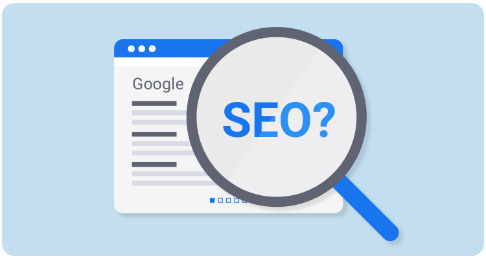
1. Comprehensive Keyword Research
Begin with thorough keyword research to identify terms your potential clients are searching for. Focus on long-tail keywords related to your coaching niche, services, and common questions your audience might have. Tools like Google Keyword Planner, Ahrefs, or SEMrush can provide valuable insights into search volume and competition levels.
2. Optimized Website Structure
Ensure your website has a clear, logical structure that’s easy for both users and search engines to navigate. Use a straightforward menu with clearly labeled sections and a sitemap to help search engines crawl your site more effectively.
3. High-Quality, Relevant Content
Content is king in the world of SEO. Produce high-quality, informative blog posts, articles, and resources that address the needs and questions of your target audience. Regularly updating your site with fresh content can improve your search engine rankings and keep visitors coming back.
4. On-Page SEO Optimization
For every piece of content you create, ensure you're implementing on-page SEO best practices. This includes using your chosen keywords in titles, headers, meta descriptions, and throughout the content in a natural, reader-friendly way. Also, optimize images by compressing them for faster loading times and using descriptive file names and alt text.
5. Mobile Responsiveness
With the majority of internet browsing now done on mobile devices, your website must be mobile-friendly. Google uses mobile-first indexing, so a responsive design that adjusts to various screen sizes is essential for SEO.
6. Page Load Speed
A slow website can significantly increase your bounce rate and negatively impact your SEO. Use tools like Google PageSpeed Insights to check your site’s speed and follow the recommendations to improve load times, such as compressing images and minimizing the use of large files.
7. Secure Website with HTTPS
Security is a top priority for Google and your potential clients. Ensure your website uses HTTPS encryption to protect user data and improve your site’s trustworthiness and search ranking.
8. Backlink Strategy
High-quality backlinks from reputable websites in your niche can greatly enhance your SEO. Focus on building relationships with other coaches, industry websites, and influencers to earn links that boost your site’s authority.
9. Local SEO for Local Coaches
If you offer coaching services in a specific area, local SEO can be incredibly beneficial. Claim your Google My Business listing, include local keywords in your content, and ensure your business is listed accurately on local directories.
10. Analyzing and Refining Your SEO Strategy
SEO is not a set-it-and-forget-it task. Use tools like Google Analytics and Google Search Console to track your website's performance, understand how visitors are finding you, and identify areas for improvement. Regularly reviewing and updating your SEO strategy based on performance data is key to staying ahead in search rankings.
11. Engaging Social Media Presence
While social media doesn’t directly influence SEO rankings, it can drive traffic to your website and increase your online visibility. Share your content on social media platforms where your potential clients are active, and engage with your audience to build your brand.
12. User Experience (UX)
Google values websites that provide a good user experience. This includes easy navigation, fast load times, and engaging, valuable content. Ensure your website is designed with the user in mind to not only satisfy search engines but convert visitors into clients.
This SEO checklist for online coaches in 2024 highlights the importance of a comprehensive, multi-faceted approach to optimizing your online presence. By following these steps, you can improve your visibility in search engine results, attract more potential clients, and establish yourself as a leading authority in your coaching niche.
4 notes
·
View notes
Text
I make a stupid decision to decide to make a (fic) writing app, cheers
Well now, I know there's like tons of them out there in the market. A lot of them are good! And even free (or have pretty good free versions)! A reddit thread I found have a few very good ones, you guys can check it out! (I'll add my own two cents later :3)
But look, the only thing I want to do, is to have a place when I can throw my ideas into a list (like what I'm did in my notes app) then auto convert it to a document when I feel like I want to write it. None of them (or at least, what I saw/found) have it!
To do that, I set up a Google Form-Google Sheets system so I can just fill in the form when I get some thoughts™. Then when I feel like I want to add another WIP to my ever-growing list of WIPs, I'll just open the associated sheet, see what idea I would like to write, then create a Google Docs and copy/paste the idea there.
Easy, right? Problem solved?
No, not really. For me, there're a few problems with this.
───── ⋆⋅☆⋅⋆ ─────
The Problem(s)™
The process of opening Google Forms takes forever to load (depending on my Internet) and I have a goldfish memory. What are the odds that I forget my ideas by then.
(Just use phone notes app then) But I'm in the mood to type my fic in a computer 😔😔 I don't wanna copy my prompt there to a doc via phone, or worse, retype it out. There's like 4 steps there at least! I'll lose my motivation by then!
Google Sheets has this problem where the text refuses to wrap properly if you add a long text (my ideas are sometimes a few hundred words of rambling y'know). So whenever I decided to grace the sheet with my presence, I'll need to reformat the wrap if I wanna read what I wrote. That's 1 whole extra step.
I'll need to open at least two tabs here, 1. my sheet file, 2. open a new docs file
Look, they're all pretty minor inconveniences imo, but I'm 1. a lazy mf and 2. a tired mf
So, I made a decision any sane person with a job and 0-energy would do - I thought "Hey, why don't I make my own?".
───── ⋆⋅☆⋅⋆ ─────
And thus begin the brain-storming
Ok, look I'm not that good at UX/UI designing. I figure that should be the first step so I went and watch a few video and stumbled upon Juxtopposed's world's shortest UI/UX design course (it's pretty great, do check it out!). Simple, quick, concise - perfect.
First, I started with designing the user flow. I planned out a general idea of what I want my app to do and how it would flow from there starting from the landing all the way to when users save their work and exit the app.
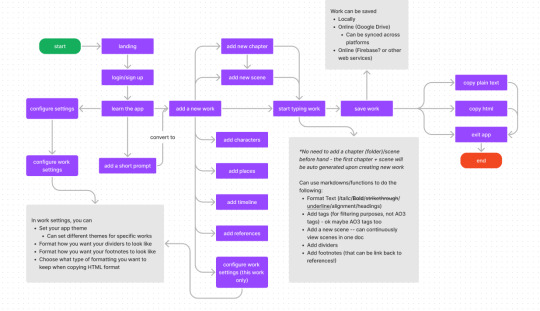
Boy, I sure hope I did that correctly.
This generally is made up of user actions (except for landing). You may notice how it's mostly AO3 focused because yes, I'm using this just for AO3 - as in I stopped using fanfiction.net, Wattpad and Quotev a long time ago.
I did get some inspirations for some of the features from other existing apps. Like:
Scriever - it's paid, but most people say it's a godsend but personally, I've never tried it. I think it pioneered the scenes idea tho.
Manuskript - Free open-sourced version of Scriever basically! They also have words and phrase frequency analyser and I think that's pretty neat!
MyStory.today - I like the idea that you can edit and view multiple scenes at once but the writing UI itself feels kinda clunky? It feels bothersome to add a new scene below my current one. But free version is enough and that's pretty nice. Oh yeah, not sure if it's just me, or it's kinda laggy
Wavemaker - ok this actually a great one! Everyone should give it a chance! But again, too complicated to just add one simple idea when I just wake up for instance.
Story Plotter - This one is nice. It actually have a idea to story button but, why are there... so many things... to choose before I can start writing the story. Granted, all of them are optional and you can just spam skip... a whole 7 times (unless it's a freeform, in that case, 4 times). But this provides a nice idea to combine more than 1 ideas into one plot tho. Also, not my style
Campfire - Is nice, there's so much things you can customize! But well, the free version can be quite limiting, like what if I need more than 25k words :(
Notion - Ok, here me out, it's not a great idea to write multi-chapters long fics here exactly without some amount of setting up too. BUT I love the markdown system here and I wanted to include it.
Do try some of them out, maybe you'll find your new writing app soulmate, who knows?
So... about the user flow diagram
I'm making this app because of two main features, ok maybe three, that I want to make my life easier and make me happier.
The ideas being converted and directly stored in my writing doc.
Being able to use markdowns to type unlike google docs *squint eyes*
Copying the whole chapter in HTML so I can just throw it in AO3 and click update without worrying about forgetting the formatting OR having to go to those docs to HTML converters.
And a secret fourth thing to maaaaaybe include things like chats, boxes, and other workskin related things
Oh, yes and how could I forgot, syncing progress across multiple devices
So I want to implement auto-save features (well, at least when you're connected to the internet, else it'll save locally first). The database I'm thinking to store these should be the user's own google drive (but that would required the user to sign in to their drive first).
Inversely, I'm thinking if the user did edit the doc in the drive, it should reflect in the app too, so I'll need to think about that. But the idea is that one chapter should be stored in one doc, and then separated by a scene separator symbol (I'll figure this out) to break it into scenes in the actual app. That may be a bit messy to edit in docs though so maybe a traditional folder + docs might suffice but then, there's also a space constraint, where there is too much scenes. That's probably where the web services come in.
───── ⋆⋅☆⋅⋆ ─────
And, oh! another diagram!
Ok look, the user flow made perfect sense to me while I was making it. After looking at it again while writing this... In hindsight, I should also make a screen/page flow diagram, or sitemap, so here it is! So- ta-da~!
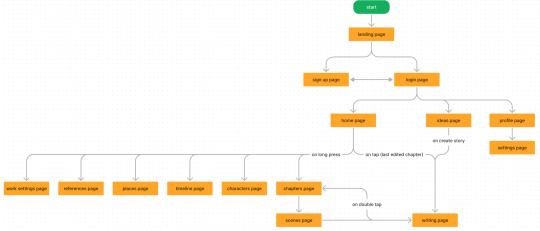
So this should be the whole flow of screens for the app. There may be more screens in the future but for now I think this should be it!
The app mainly just consist of -
The home page - which displays ALL your works/books
The ideas page - which is basically my notes app for, well, ideas, word vomit, random shower thoughts about how much you want a fictional character to be xxx
The writing page - which will be the main working space, the rest of the pages like references, characters, places, timeline, chapters and individual scenes can be accessed easily from this page too
The profile page - well, it's your profile! Access your profile settings, change themes, work space settings or what you want to copy in your html here - maybe add friends for collabs and betas in the future? We'll see
───── ⋆⋅☆⋅⋆ ─────
And that's it! ...For now
Oh my god, I'll admit, this post went on longer than I expected haha. That's all that I have to share for now! Next up, I'll get started on the wireframing process (moodboards? hunting down apps? reddit???? ok nevermind, reddit sounds like a bad idea). I know I kept calling it app, but I think I want it to have an app, windows, (macs?) and web version.
Thanks for making it this far and reading it all!
#writing app#app planning#app development#fic writing#writing tools#brainstorming#userexperience#user interface#app ideas#this is me procrastinating#on actually doing my wips
3 notes
·
View notes
Text
The 12 Most Important SEO Steps for Solving Low Visibility
Introduction
A strong online presence is critical for the success of any organization in the digital age, where online competition is tough. Even with a well-designed website and great content, many businesses struggle with their search engine presence. This is where Search Engine Optimization (SEO) enters the picture. Businesses may improve their website's rating on search engine results pages (SERPs) and increase their online visibility by applying the correct methods. In this blog post, we'll look at the 12 most crucial SEO procedures for resolving low visibility concerns and putting your website back on the map.
Conduct a Thorough Website Assessment:
Conducting a thorough website assessment is the first step in resolving poor visibility concerns. To find areas for improvement, use technologies such as Google Analytics and Google Search Console. Examine the overall performance of the site, look for broken links, guarantee correct indexing, and evaluate loading speed.
Conduct Keyword Research:
The core of SEO is keywords. Investigate relevant keywords and phrases used by your target audience to look for items or services in your niche. Use keyword research tools like Google Keyword Planner and SEMrush to uncover high-volume, low-competition keywords for your content.
Optimize On-Page Content:
After you've found your target keywords, optimize your on-page content. Create high-quality, entertaining, and instructive material that naturally incorporates the chosen keywords. To make your material more search engine friendly, pay attention to meta titles, meta descriptions, heading tags, and URL structures.
Improve the User Experience (UX):
Google places a high value on the user experience. Make sure your website is mobile-friendly, easy to use, and visually appealing. A good user experience encourages visitors to stay on your site longer, lowering bounce rates and enhancing search rankings.
Build High-Quality Backlinks:
Earning backlinks from respectable and relevant websites can dramatically increase the authority and visibility of your website. Concentrate on producing useful content that other websites will want to link to. Build a solid backlink profile by collaborating with influencers, partners, and industry leaders.
Local SEO should be optimised:
Local SEO is critical if your company services a specific geographical area. Claim your Google My Business listing and give the correct business information, such as your address, phone number, and hours of operation. Encourage customers to post favourable reviews, as they can help you rank higher in local searches.
Utilize the Power of Social Media:
Social media platforms influence SEO in addition to engagement. Share your material on multiple social media platforms to boost your reach and the possibility of obtaining backlinks. Engage your audience and cultivate a loyal following, which can help you rank higher in search results.
Increase the speed with which your website loads:
A website that takes too long to load can result in higher bounce rates and lower search rankings. To improve the speed of your website, optimize images, employ browser caching, and use content delivery networks (CDNs).
Optimizing for Voice Search:
With the rise of voice assistants such as Siri and Alexa, optimizing for voice search has become critical. Long-tail keywords and natural language phrases should be used in your content to match how visitors express their queries.
Apply Schema Markup:
Schema markup assists search engines in better understanding your content and displaying rich snippets in search results. This can result in increased click-through rates and visibility. To successfully deploy schema markup, use Google's Structured Data Markup Helper.
Update and refresh the content on a regular basis:
Keep your website fresh and current by periodically updating and revising your content. Add new blog posts, modify old ones, and make sure your content is relevant and up to date.
Evaluate and Analyze Performance:
SEO is an ongoing activity, and it is critical to routinely evaluate the performance of your website. Track your search rankings, organic traffic, and other important metrics using analytics tools. Adjust your SEO strategy as necessary to maintain your visibility.
Conclusion:
Solving low visibility concerns with SEO is a comprehensive process that demands commitment, perseverance, and a well-rounded strategy. You can overcome low visibility challenges and establish a strong online presence by conducting a website audit, performing keyword research, optimizing content, and focusing on user experience, backlinks, local SEO, social media, loading speed, voice search, schema markup, content updates, and performance analysis.
Read More :
4 notes
·
View notes
Text
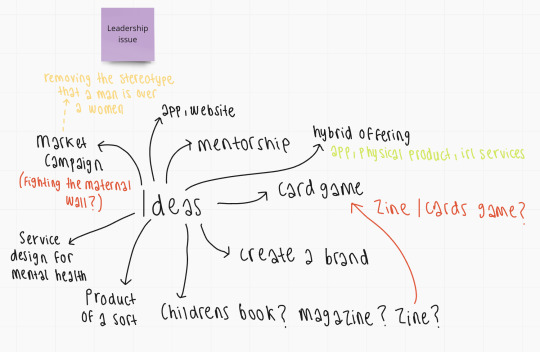
DES 302 - Week 2 Capstone
#302week2 of capstone! And so the grind begins!
It seems last week was still half-holiday mode but now the real work kicks off! Last week I revisited my research proposal and reminded myself of the case studies that I gathered. I have quickly understood that in this semester organisation is key to 301 and 302. Thus I created various timelines and to-do lists for all my courses (including how I will implement my design methodology in which weeks). Something I am concerned with this semester is that I will technically be taking a five-paper semester (DES301+302 and INTBUS202). However, it seems so far that this international business paper is on a lighter load in terms of work.
For context, I am a student in the Business/DEI stream. And, my how might we statement looks at “How might we design through the lens of DEI, for maternal women in the corporate environment”. This comes from my views and concerns when entering the workforce. As well as, circumstances my own family have dealt with. That being said, nearing the end of last week is when my precedents and mood boarding began for this project. At this point in time I have no firm idea of what I want the end result to be. However, I feel I may head in the direction of creating a non-profit organisation that offers perhaps a mixture of products/services. There will be a strong focus on all aspects of the DEI framework. And, this is how I mapped this concept:
//IDEA//
1. Non-profit organisation = a brand
2. Fundraising scheme = a workshop? / selling products?
3. An app that holds all this information
4. A market campaign to boost awareness (titled: the maternal wall)
The two outputs I am pretty keen to develop are creating a brand (non-profit organisation) and a market campaign. This is due to my passion for marketing, as well as my understanding that there is a stereotype towards maternal women in the workforce. I want to navigate this understanding and provoke viewers of this said marketing campaign to act and think differently towards what the ‘perception’ of maternal women is. With the information I have gathered, I am excited to begin this part of the project.
So far, the tool I am utilising the most is Miro and Google. These two are working very well hand-in-hand in terms of optimising my searchability and organisational skills. However, I look forward to using tools such as adobe (illustrator and photoshop are my go-to). As well as, perhaps challenging myself to use 3D software such as Maya or Blender - and then figma if delving into UX/UI.
As I embark on this semester-long project I am fearful of the long nights and challenges ahead. I understand this will not be a smooth-running roadmap, and some weeks will turn to shambles. However, I am hopeful with consistency and better organisation, I will be able to manage any nightmares that await! I am also anxious about the feedback I will be asking for during this week in terms of my ideas thus far - ideally, I get given the green light on my ideas otherwise if not I will find it difficult to look towards other outputs.
3 notes
·
View notes
Text
E-commerce SEO Strategies Unveiled: Boosting Sales and Visibility
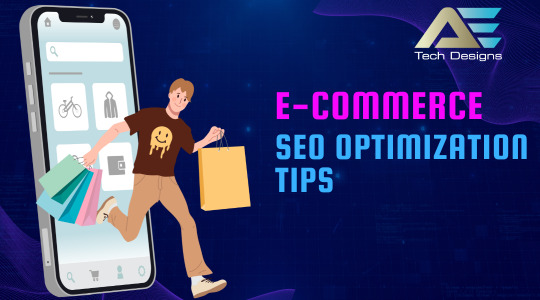
In the ever-evolving landscape of e-commerce, staying ahead of the competition requires not only a compelling product but also a well-optimized online presence. In this comprehensive guide, we will delve into the world of E-commerce SEO optimization. No buzzwords, just actionable insights to enhance your online store's visibility and boost sales. Let's get started
Understanding the Basics
To lay a solid foundation, let's start with the basics. E-commerce SEO optimization involves a series of on-page and off-page strategies aimed at improving your website's ranking on search engine results pages (SERPs). This optimization is pivotal for attracting high-quality organic traffic, increasing sales, and staying competitive in the digital marketplace.
Keyword Research
The cornerstone of any successful SEO campaign is thorough keyword research. Begin by compiling a list of relevant keywords that reflect your products, services, and industry. In addition to your primary keywords, consider long-tail keywords, as they often have less competition and can yield highly targeted traffic. For instance, if you're a digital marketing agency in Seattle, keywords like "digital marketing services in Seattle" and "Seattle SEO company" are goldmines.
On-Page Optimization
High-Quality Content: Your website's content should not only be unique but also provide value to your audience. Craft product descriptions, blog posts, and landing pages that resonate with your target audience. Incorporate the primary and long-tail keywords naturally within the content while maintaining readability and a professional writing style.
Page Titles and Meta Descriptions: Ensure that each page has a unique and descriptive title tag and meta description. These elements should include relevant keywords and provide a concise summary of the page's content. This encourages users to click through to your website from the search results.
Header Tags: Use header tags (H1, H2, H3, etc.) to structure your content. This not only improves readability but also helps search engines understand the hierarchy of information on your pages.
User Experience (UX) Matters
Google values user experience, so make sure your website is user-friendly. Optimize for mobile devices, improve page load times, and ensure intuitive navigation. A seamless UX not only pleases visitors but also satisfies search engine algorithms.
Backlink Building
Off-page SEO is as crucial as on-page optimization. Seek high-quality backlinks from reputable websites in your industry. Guest posting, influencer collaborations, and participating in industry forums can all help in this regard.
Monitoring and Analytics
Track your SEO efforts using tools like Google Analytics and Google Search Console. Regularly review your website's performance, make necessary adjustments, and stay updated on SEO trends and algorithm changes.
Conclusion:
In the ever-competitive world of e-commerce, mastering SEO optimization is your key to success. By adhering to these strategies and tips, you can enhance your website's visibility, drive organic traffic, and ultimately boost your sales. If you're seeking expert assistance, consider partnering with AE Tech Design Agency, your trusted SEO company in Seattle. Contact us today to explore how our digital marketing services can elevate your online presence and drive meaningful results.
Remember, the world of SEO is constantly evolving, so staying informed and adapting your strategies accordingly is essential for long-term success.
#E-commerce SEO#SEO Optimization#E-commerce Strategies#SEO Tips#Organic Traffic#Search Engine Rankings#Keyword Research#On-Page SEO#Off-Page SEO#User Experience (UX)#Backlink Building#Local SEO#Google Analytics#Digital Marketing#SEO Trends#SEO Algorithm#Online Visibility#Website Performance#SEO Company#Seattle Digital Marketing
6 notes
·
View notes
Text
What is SEO?
SEO unleashing the Power of Hunt Machine Optimization SEO, or Search Machine Optimization, is a fundamental digital marketing strategy that aims to meliorate a website's visibility and ranking in quest machine results. In moment's connected world, where quest machines have come the go- to resource for chancing information, products, and services, understanding SEO is vital for businesses and individualities seeking to establish a strong online presence and reach their target cult effectively. The Purpose of SEO The primary purpose of SEO is to enhance a website's chances of appearing among the top results in quest machines like Google, Bing, Yahoo, and others when stoners search for specific keywords or expressions related to the website's content. How Does SEO Work? Hunt machines use complex algorithms to anatomize and rank websites predicated on various factors. SEO involves a series of ways and practices that align with these algorithms and impact how quest machines perceive and index a website. Some of the pivotal rudiments of SEO include Keyword Research Understanding the quest terms and expressions that stoners generally use to find information related to a website's content. On- runner SEO This involves optimizing individual web runners to meliorate their connection to targeted keywords. It includes optimizing title labels, meta descriptions, heads, and content to match the user's quest intent. Content Creation Creating high- quality, precious, and applicable content that addresses the conditions of the target cult. Content is a critical element of SEO as quest machines prioritize websites that give useful information to stoners. Link structure Acquiring links from other estimable websites back to your point. Indicating that your content is secure and applicable. Technical SEO icing that the website's technical aspects, analogous as point speed, mobile- benevolence, and crawlability, are optimized to meliorate the user experience and quest machine rankings. user Experience( UX) fastening on furnishing a indefectible and user-friendly experience on the website, including easy navigation and intuitive design. The significance of SEO SEO is of consummate significance in the digital terrain for several reasons Increased Visibility Websites that rank advanced in quest results are more likely to attract organic business, adding the website's visibility and implicit reach. Credibility and Trust Websites that appear among the top quest results are constantly perceived as farther secure and credible by stoners. Targeted Business SEO helps attract guests who are laboriously searching for products, services. Cost- Effectiveness Compared to other digital marketing strategies, SEO can give a advanced return on investment( ROI) over the long term. White Hat SEO vs. Black headpiece SEO SEO practices can be distributed into two main types White headpiece SEO and Black headpiece SEO.

#seo#digital#digitalmarketing#outsourcing#freelancing#marketing#facebookads#googleads#whitehatseo#black and white#whitehat
2 notes
·
View notes